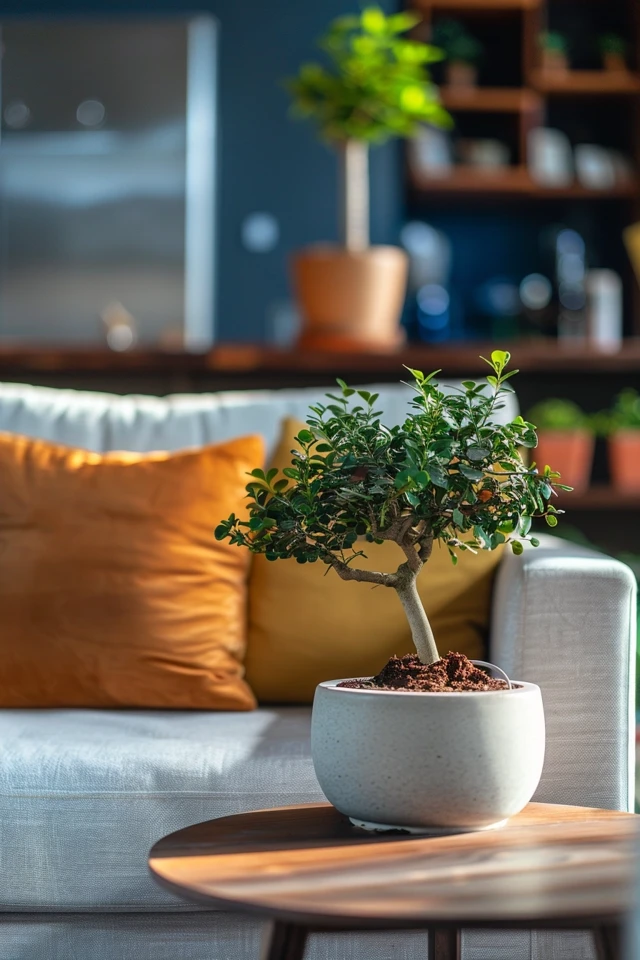Hello, budding bonsai enthusiasts! If you’ve ever admired the artistry of bonsai trees and wondered how to grow them yourself, you’re in the right place. In this beginner’s guide, I will walk you through the process of growing bonsai from cuttings, sharing valuable tips and techniques along the way.
Bonsai trees are a wonderful addition to any home or garden. These miniature trees, meticulously shaped and pruned, offer a glimpse of nature’s magnificence in a compact form. Growing bonsai from cuttings is not only an excellent way to begin your journey into bonsai gardening but also a rewarding experience in itself.
To get started, you’ll need to select a suitable cutting from an existing tree. Look for a cutting that is around 2-4 inches long and about 1/8 inch thick. Spring and summer are the best times to take cuttings, as the trees are in their active growth phase during this time.
Key Takeaways:
- Choose a cutting that is 2-4 inches long and 1/8 inch thick.
- Spring and summer are the ideal seasons for taking cuttings.
- Growing bonsai from cuttings allows for the creation of bonsai trees without major pruning.
- Patience is vital, as bonsai trees take time to develop.
- Stay tuned for the next sections, where we delve deeper into bonsai care and techniques!

Selecting the Right Material and Establishing Attractive Roots
When it comes to growing bonsai trees from cuttings, selecting the right material is crucial for success. As a beginner, you want to choose plants with small leaves and good bark development. This will ensure that your bonsai has the desired aesthetic appeal.
For pine bonsai, look for trees with short, straight needles. These characteristics are key to achieving the classic pine bonsai look.
Another important aspect to consider is establishing attractive surface roots. This plays a significant role in enhancing the overall visual appeal of your bonsai. To accomplish this, you can employ techniques such as seedling-cutting and reducing the taproot. These methods promote the growth of fine, shallow roots that lend an elegant touch to your bonsai tree.
Proper soil and pot selection are also essential for the successful growth and development of your bonsai. The soil should provide adequate drainage while retaining enough moisture for the tree’s needs. Additionally, the pot should be appropriate in size and shape to accommodate the bonsai and complement its aesthetic.
“Selecting the right material is like finding a diamond in the rough. It’s the foundation from which your bonsai will flourish and become a true masterpiece.” – Your Name

Pruning and Shaping Your Bonsai Tree
Pruning is a crucial step in shaping bonsai trees and maintaining their health and beauty. As a beginner, it’s important to learn the basics of pruning to ensure your bonsai thrives. The first prune should be done in spring or early summer when the plant is actively growing. This allows the tree to recover faster and encourages new growth.
When pruning your bonsai, carefully trim branches between the bars/lines that wrap around them. This helps maintain the desired shape and proportions of your tree. Additionally, you can remove leaves from choice places to encourage new branch growth. This selective pruning technique allows you to shape your bonsai according to your preferences.
Remember, pruning is a dance with nature. While you have control over the shaping process, the tree will continue to surprise you with its growth patterns. Don’t be afraid to experiment with different pruning techniques and observe how your bonsai responds.
It’s essential to allow your bonsai to grow undisturbed for at least a year before pruning it again. This gives the tree time to recover and develop strong branches. In the meantime, provide your bonsai with regular watering and place it in an area that receives adequate sunlight. These simple care instructions will contribute to the overall health and growth of your bonsai tree.


